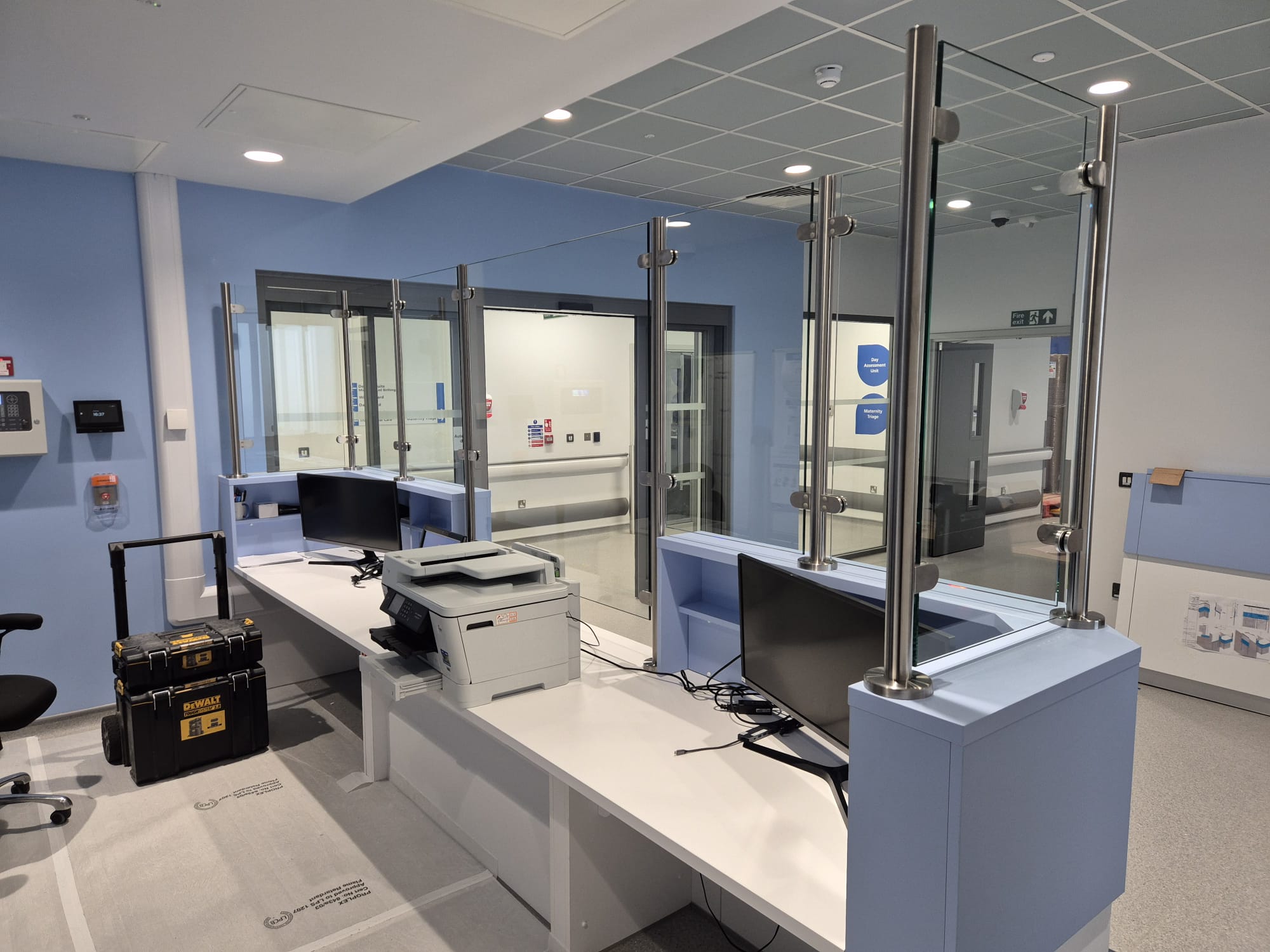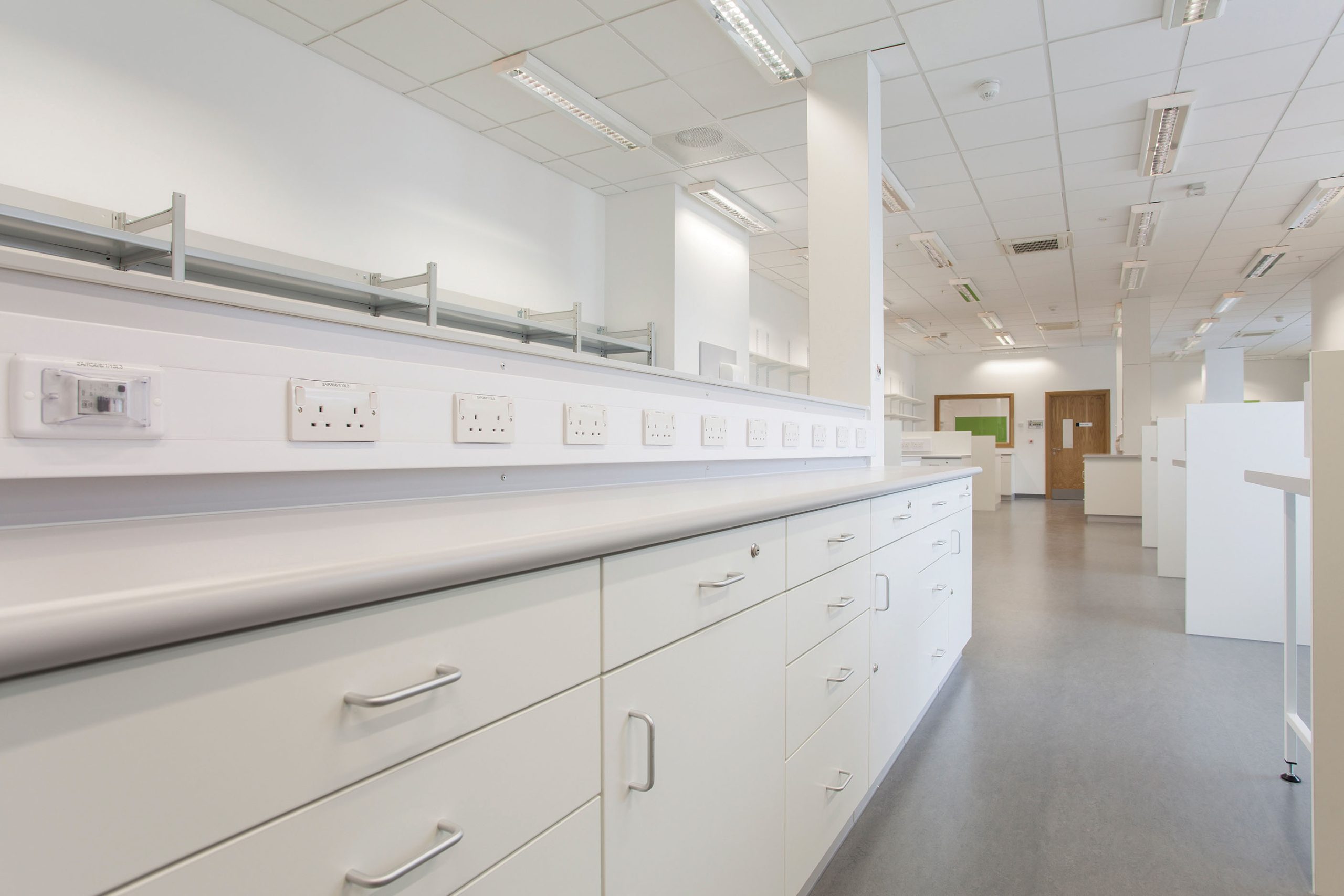The safety of NHS staff has become one of the most pressing challenges facing healthcare…

Balancing comfort and durability in healthcare waiting areas
Healthcare waiting areas play a crucial role in shaping a patient’s first impression of a facility. These spaces serve as the gateway to care, where patients, families and visitors often spend long periods waiting for appointments or test results. For this reason, selecting the right fitted furniture is essential in creating an environment that is welcoming and functional. However, choosing furniture for healthcare waiting areas involves more than just aesthetics – it requires a careful balance of durability and style, writes Tony Huggins, managing director of David bailey Furniture.
Healthcare waiting areas require carefully designed, functional furniture, which is able to handle the flow of patients and visitors while maintaining a professional and calming atmosphere. Fitted furniture – built-in storage, counters and reception areas—play a crucial role in making these spaces more efficient and organised.
In addition to providing ample storage for important documents and medical supplies, fitted furniture can help streamline patient check-ins, reduce clutter and enhance the overall patient experience. Bespoke fitted furniture also allows healthcare providers to optimise space and maintain a clean, organised and professional environment.
Although comfort in waiting areas is typically associated with seating, fitted furniture also plays a significant role in creating an environment that feels welcoming and patient-friendly. Healthcare facilities are places where patients may be anxious, stressed, or uncomfortable, and the design of waiting areas should seek to mitigate these feelings.
This means that fitted furniture should be ergonomically designed for both patients and staff. For example, reception desks must allow staff to easily interact with patients without compromising comfort. Counters and surfaces should be at heights that enable staff to perform their duties comfortably over long periods, while also ensuring that patients can access information or fill out forms without strain.
Reception desks with a dual-height design – where one section accommodates standing staff and another is lower to be accessible to wheelchair users – can further offer better accessibility for patients of all abilities.
Clutter-free spaces
A key aspect of creating a comfortable healthcare waiting area is the ability to reduce clutter while maintaining a sense of calm. Fitted storage units, shelving and cabinets allow healthcare facilities to keep medical supplies, patient files and administrative paperwork neatly organised and out of sight. This not only makes the waiting area look cleaner and more professional, but also reduces anxiety for patients, who may find cluttered or chaotic spaces unsettling. Storage solutions such as built-in cupboards, hidden shelving and cabinets can also help keep essential items nearby while maintaining the appearance of a calm, orderly space.
Furthermore, healthcare waiting areas experience constant use, making durability one of the most critical considerations when selecting fitted furniture. Unlike residential or office settings, healthcare environments must contend with frequent cleaning, heavy foot traffic and continuous wear and tear. As a result, fitted furniture needs to be made from materials that are both robust and easy to maintain.
It is another reason why, fitted furniture in healthcare settings is constructed from durable materials that can withstand daily wear and tear. For example, high-pressure laminate and solid-surface materials are excellent choices for counters, reception desks and storage units. These materials are not only scratch-resistant, but are also impervious to moisture and chemicals, making them ideal for environments where frequent cleaning and sanitation are necessary.
This is because hygiene is a top priority in any healthcare environment and fitted furniture should be designed with easy cleaning and maintenance in mind. Smooth, non-porous surfaces are ideal for fitted furniture in waiting areas, as they can be easily wiped down and disinfected without harbouring germs or bacteria.
Cabinets and storage units should also have flush edges and minimal gaps to prevent the accumulation of dust or debris. By choosing easy-to-clean materials and designs, healthcare providers can help reduce the spread of infections and ensure that waiting areas remain hygienic and welcoming.
Health and safety
In addition to durability and cleanliness, healthcare furniture must also meet certain health and safety standards to ensure the well-being of patients and staff. Fitted furniture should comply with fire safety regulations, using fire-retardant materials where appropriate. Sharp edges should also be avoided, and furniture should be securely fastened to walls or floors to prevent tipping or accidents in high-traffic areas.
While functionality and durability are essential, the style of fitted furniture also plays an important role in shaping the patient experience. A well-designed waiting area can help put patients at ease, creating a sense of trust and professionalism. In recent years, healthcare facilities have increasingly embraced design elements that evoke the warmth and comfort of home, while maintaining the efficiency and cleanliness required in medical settings.
We can certainly say that gone are the days when healthcare waiting areas were stark, cold, and institutional. Today’s healthcare environments are designed to be welcoming and calming, with a focus on creating positive patient experiences. Fitted furniture can contribute to this by incorporating modern design aesthetics that blend form and function.
Neutral colour palettes, warm wood finishes and sleek, minimalist designs help create a professional yet inviting atmosphere. Reception desks, counters and storage units can be customised to match the overall aesthetic of the healthcare facility, whether it be modern, traditional, or somewhere in between.
This, in fact, is one of the key benefits of fitted furniture – its ability to customise designs to suit the specific needs of a healthcare facility. Custom cabinets, counters and shelving units can be tailored to fit the dimensions and layout of the space, maximising functionality and efficiency.
For example, storage units can be manufactured to accommodate specific medical equipment, patient files, or personal belongings. Reception desks can be designed to include built-in technology, such as computer terminals, printers and payment systems, to streamline administrative tasks.
Healthcare providers can also personalise fitted furniture to reflect their branding or mission. Custom finishes, colour schemes and design details can create a cohesive look throughout the facility, reinforcing the healthcare provider’s identity and values.
In addition to aesthetics, fitted furniture can also offer practical, welcoming features that enhance the patient experience. For example, built-in shelving can provide convenient storage for patients’ personal belongings while they wait. Reception desks with integrated signage or digital displays can also help guide patients through the check-in process, reducing confusion and wait times. Fitted counters with built-in power outlets or charging stations further offer added convenience for patients and visitors who need to charge devices while they wait.
So, we can see that choosing the right fitted furniture for healthcare waiting areas involves balancing functionality, durability and aesthetics to create a space that is welcoming, comfortable and efficient. Fitted furniture is more than just a few cupboards and shelves – it plays a vital role in keeping waiting areas organised, clutter-free and hygienic, while also contributing to the overall patient experience.








